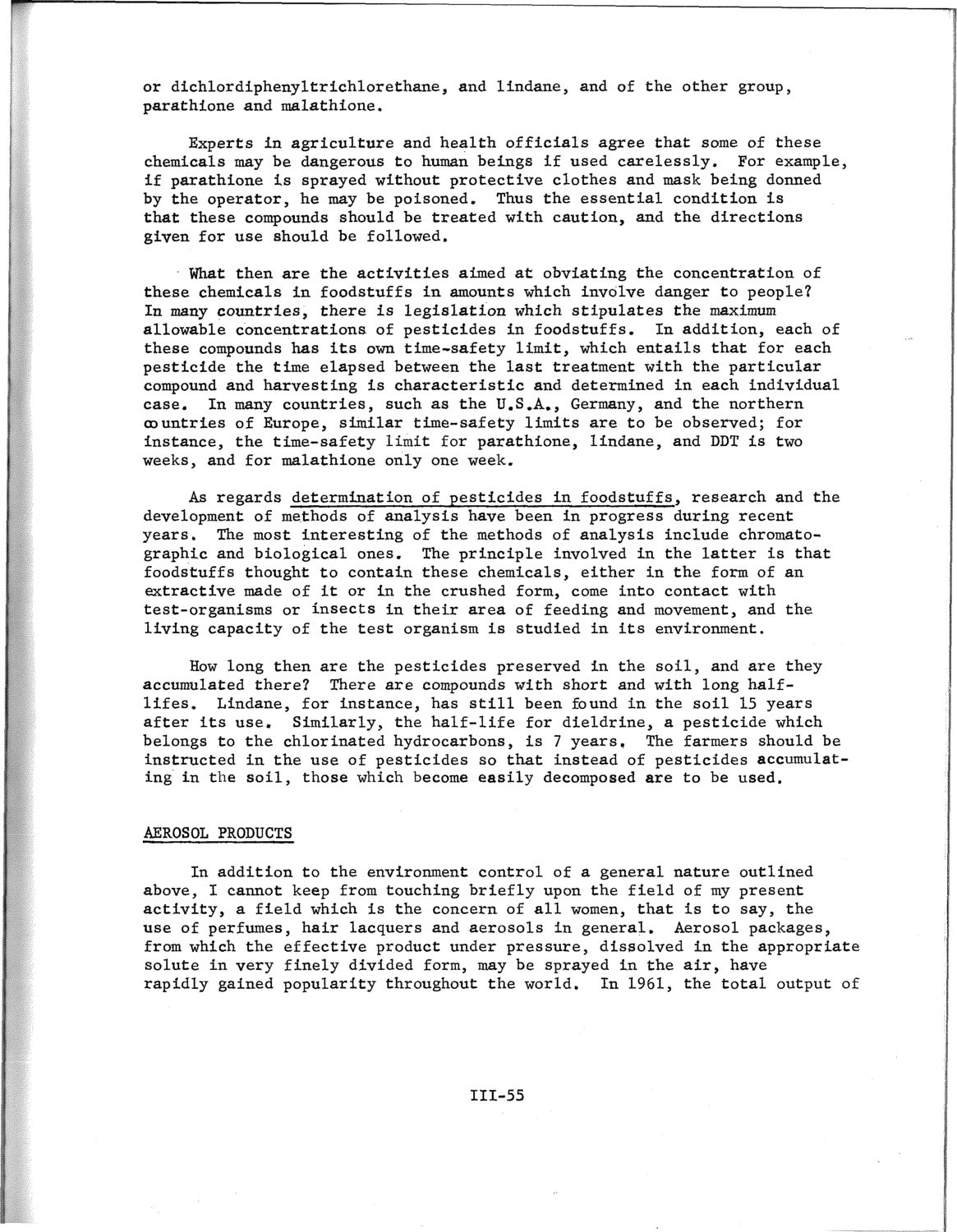| |
| |
Caption: SWE - Proceedings of the First International Conference of Women Engineers and Scientists
This is a reduced-resolution page image for fast online browsing.

EXTRACTED TEXT FROM PAGE:
or dichlordiphenyltrichlorethane, and lindane, and of the other group, parathione and malathione. Experts in agriculture and health officials agree that some of these chemicals may be dangerous to human beings if used carelessly. For example, if parathione is sprayed without protective clothes and mask being donned by the operator, he may be poisoned. Thus the essential condition is that these compounds should be treated with caution, and the directions given for use should be followed. What then are the activities aimed at obviating the concentration of these chemicals in foodstuffs in amounts which involve danger to people? In many countries, there is legislation which stipulates the maximum allowable concentrations of pesticides in foodstuffs. In addition, each of these compounds has its own time-safety limit, which entails that for each pesticide the time elapsed between the last treatment with the particular compound and harvesting is characteristic and determined in each individual case. In many countries, such as the U.S.A., Germany, and the northern countries of Europe, similar time-safety limits are to be observed; for instance, the time-safety limit for parathione, lindane, and DDT is two weeks, and for malathione only one week. As regards determination of pesticides in foodstuffs, research and the development of methods of analysis have been in progress during recent years. The most interesting of the methods of analysis include chromatographic and biological ones. The principle involved in the latter is that foodstuffs thought to contain these chemicals, either in the form of an extractive made of it or in the crushed form, come into contact with test-organisms or insects in their area of feeding and movement, and the living capacity of the test organism is studied in its environment. How long then are the pesticides preserved in the soil, and are they accumulated there? There are compounds with short and with long halflifes. Lindane, for instance, has still been found in the soil 15 years after Its use. Similarly, the half-life for dieldrine, a pesticide which belongs to the chlorinated hydrocarbons, is 7 years. The farmers should be instructed in the use of pesticides so that instead of pesticides accumulating in the soil, those which become easily decomposed are to be used. AEROSOL PRODUCTS In addition to the environment control of a general nature outlined above, I cannot keep from touching briefly upon the field of my present activity, a field which is the concern of all women, that is to say, the use of perfumes, hair lacquers and aerosols in general. Aerosol packages, from which the effective product under pressure, dissolved in the appropriate solute in very finely divided form, may be sprayed in the air, have rapidly gained popularity throughout the world, In 1961, the total output of 111-55
| |